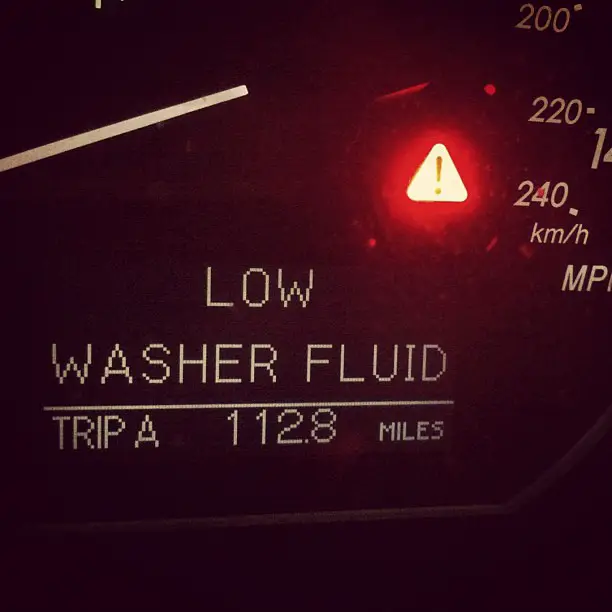Changing your vehicle’s engine oil regularly is crucial for maintaining optimal performance and extending the life of your car’s engine.
However, determining the ideal oil change interval can be confusing due to varying recommendations from manufacturers, friends, and mechanics.
How often does car oil need to be changed?
This comprehensive guide aims to clarify the above question with the simple-to-understand factors below.
Contents
But before we go into the factors, here is my take:
| Oil Type | Traditional Recommendation | Modern Recommendation |
|---|---|---|
| Conventional Oil | Every 3,000 miles | Every 5,000 to 7,500 miles |
| Synthetic Blend Oil | Every 3,000 to 5,000 miles | Every 7,500 to 10,000 miles |
| Full Synthetic Oil | Every 5,000 miles | Every 7,500 to 15,000 miles |
Recommended oil change intervals depend primarily on your vehicle’s age, oil type, and driving conditions. Most modern vehicles from 2000 and above using synthetic oil can go 7,500 miles or more between oil changes for normal driving. However, for older vehicles, conventional oils, and severe operating conditions, more frequent changes around every 3,000–5,000 miles are advised.
Key Takeaways
- The age of your vehicle, the type of oil you use, and your driving conditions all influence the oil change intervals.
- Modern vehicles using synthetic oil may only need oil changes every 7,500 miles or more under normal driving conditions.
- However, older vehicles, conventional oils, and severe operating conditions like towing or extreme temperatures necessitate more frequent oil changes, around every 3,000–5,000 miles.
- Always follow your vehicle’s manufacturer’s recommendations in the owner’s manual for oil changes or toppings.
- Checking your oil level monthly and changing oil annually, regardless of mileage, is still good practice.
- If your oil appears excessively dirty or smells burnt, an oil change is likely due regardless of the mileage interval.
- Regular oil changes are an inexpensive way to protect your engine and extend your vehicle’s lifespan. Pay close attention to your oil change needs.
here is the research result from the Pakistan Journal of Science on the effect of oil change on vehicular exhaust emission


Types of Oil
Understanding the different types of motor oil is crucial for maintaining your vehicle’s performance and longevity. Here’s a breakdown of the four primary types of car oils:
| Type of Oil | Description | Best For |
|---|---|---|
| Conventional Oil | A refined version of crude oil, typically less expensive and with fewer additives. | Drivers with normal driving patterns and simple engine designs. |
| Full Synthetic Oil | Manufactured oil with advanced additives for superior protection and performance. | Vehicles under stress, such as those used for towing or in extreme temperatures. |
| Synthetic Blend Oil | A mix of synthetic and conventional oils, offering improved performance at a lower cost. | Drivers seeking a balance between cost and enhanced engine protection. |
| High Mileage Oil | Formulated for vehicles with over 75,000 miles, containing additives to reduce leaks and wear. | Older vehicles need extra protection against wear and tear. |
Detailed Overview
Conventional Oil
- Derived from refined crude oil.
- Cost-effective and suitable for light-duty vehicles.
- Requires more frequent changes compared to synthetic oils.
Full Synthetic Oil
- Created through a manufacturing process that removes impurities.
- Provides excellent lubrication, reduces engine wear, and improves fuel efficiency.
- Ideal for high-performance vehicles or those operating in extreme conditions.
Synthetic Blend Oil
- Combines both synthetic and conventional oils.
- Offers some benefits of synthetic oil while being more affordable.
- Suitable for drivers who want better protection without the higher cost of full synthetic oil.
High Mileage Oil
- Contains special additives designed to rejuvenate seals and reduce leaks.
- It helps minimize oil consumption and prevents sludge buildup in older engines.
- Recommended for vehicles with significant mileage to maintain performance.
Choosing the Right Oil
When selecting the appropriate oil for your vehicle, consider factors such as:
- Vehicle Age: Older vehicles may benefit from high-mileage oil.
- Driving Conditions: If you frequently drive in harsh conditions, full synthetic or synthetic blend oils may be more suitable.
- Manufacturer Recommendations: Always refer to your vehicle’s owner manual for specific oil type recommendations.
Signs of Oil Degradation
Recognizing the signs of oil degradation is essential for maintaining your vehicle’s health. Here are key indicators that your oil may need changing:
| Sign | Description |
|---|---|
| Dark Color | Fresh oil is typically amber; dark or black oil indicates contamination. |
| Grainy Texture | Oil should feel smooth. If it feels gritty, it may contain dirt or metal particles. |
| Burning Smell | A burnt smell suggests overheating or breakdown of the oil. |
| Increased Engine Noise | If your engine runs louder than usual, it may indicate insufficient lubrication. |
| Oil Pressure Light | A warning light on your dashboard can signal low oil pressure due to degraded oil. |
Cost Considerations
Understanding the costs associated with oil changes can help you make informed decisions about vehicle maintenance. Here are key factors to consider:
| Factor | Description |
|---|---|
| Average Cost | Typical oil change costs range from $50 to $100, depending on various factors. |
| Type of Oil | Synthetic oils are generally more expensive but offer longer intervals between changes. |
| Location Variability | Prices can vary significantly based on geographic location and service provider. |
| Hidden Costs | Consider additional costs such as filters, labor, and potential environmental fees for waste disposal. |
Technological Advances
Modern vehicles often come equipped with advanced technology that can help monitor oil conditions and optimize maintenance schedules.
- Oil Life Monitoring Systems: Many newer vehicles have built-in systems that assess driving conditions and notify owners when an oil change is necessary.
- Improved Oil Formulations: Advances in synthetic oils allow for longer intervals between changes, reducing overall maintenance frequency.
- Diagnostic Tools: Some vehicles feature diagnostic tools that provide real-time data on engine performance and oil quality.

Signs: It’s Time for an Oil Change
Recognizing when it’s time for an oil change is crucial for maintaining your vehicle’s performance and longevity. While regular maintenance schedules are essential, there are specific signs that indicate your oil may need changing sooner than expected. Here are the key indicators to watch for:
| Sign | Description |
|---|---|
| Dark or Black Oil | Fresh oil is typically a clear amber color. If the oil appears dark or black, it may be contaminated and in need of a change. |
| Gritty Texture | Oil should feel smooth to the touch. If you notice a gritty texture, it may contain dirt or metal particles, indicating degradation. |
| Burning Smell | A burnt smell from the engine can suggest overheating or that the oil has broken down, signaling that it’s time for a change. |
| Increased Engine Noise | If your engine is louder than usual, it may indicate insufficient lubrication due to old or degraded oil. |
| Oil Pressure Light | An illuminated oil pressure warning light on your dashboard is a clear signal that you should check your oil and possibly change it. |
| Oil Leaks | Visible oil spots under your vehicle can indicate leaks, which may necessitate an oil change and further inspection of your engine. |
importance of Timely Oil Changes
Ignoring these signs can lead to serious engine problems, including increased wear and tear, overheating, and even catastrophic engine failure. Regularly checking your oil level and condition can help you catch these issues early and ensure your vehicle runs smoothly.
How to Change Your Oil at Home
Changing your oil at home is a straightforward process that can save you money and give you a sense of accomplishment. Here’s a step-by-step guide to help you perform an oil change safely and efficiently.
Tools and Materials Needed
Before you begin, gather the necessary tools and materials:
- Oil filter wrench: To remove the old oil filter.
- Oil drain pan: To collect the old oil.
- Socket set: For loosening and tightening the oil drain plug.
- New oil filter: Ensure it’s compatible with your vehicle.
- New engine oil: Use the type and quantity recommended in your owner’s manual.
- Funnel: To pour new oil without spills.
- Jack and jack stands or ramps: To lift the vehicle safely if needed.
- Gloves and rags: For cleanliness and safety.
Step-by-Step Process
Transfer used oil into a sealed container and take it to a recycling center or an auto parts store that accepts used motor oil.
Prepare Your Vehicle
Park your car on a level surface and turn off the engine. Allow it to cool for at least an hour if it has been running.
Engage the parking brake and, if necessary, use wheel chocks to prevent rolling.
Lift the Car
If your vehicle has low clearance, use a jack to lift it off the ground. Secure it with jack stands or drive it onto ramps.
Drain the Old Oil
Open the hood and remove the oil cap to allow ventilation.
Position your oil drain pan under the drain plug, then carefully loosen and remove the drain plug using a socket wrench. Allow the old oil to fully drain into the pan.
Once drained, replace the drain plug and tighten it according to your manufacturer’s specifications.
Remove the Old Oil Filter
Use an oil filter wrench to loosen and remove the old oil filter. Be prepared for some residual oil to spill out, so keep your drain pan underneath.
Make sure to remove any old gasket material left on the engine.
Install the New Oil Filter
Before installing the new filter, apply a small amount of new oil to the rubber gasket of the new filter. This helps create a better seal.
Screw on the new oil filter by hand until it is snug, then tighten it slightly more (usually about three-quarters of a turn).
Add New Oil
Using a funnel, pour in new engine oil through the oil cap. Start with about one quart less than your vehicle’s total capacity, as indicated in your owner’s manual.
Replace the oil cap securely.
Check Oil Level
Start your engine and let it run for about 10 seconds, allowing new oil to circulate.
Turn off the engine and wait a moment before checking the dipstick. Pull out the dipstick, wipe it clean, reinsert it, then pull it out again to check that the oil level is between the ‘MIN’ and ‘MAX’ marks.
Add more oil if necessary until you reach the proper level.
Dispose of Old Oil Properly
Transfer used oil into a sealed container and take it to a recycling center or an auto parts store that accepts used motor oil

Conclusion
By taking into account these factors and closely adhering to your manufacturer’s instructions, you can effectively safeguard your engine while preventing needless, expensive oil changes. Regular oil changes are an inexpensive way to prolong the life of your vehicle and ensure reliable performance.
FAQ
1. How much is an oil change?
According to AAA, the average cost of a conventional oil change is around $38, while a synthetic oil change averages about $70. If you opt to do it yourself, the cost of 5 quarts of conventional oil is approximately $28, and synthetic oil is around $45. These prices can vary based on the service provider and location.
2. How long can a car go without an oil change?
Most modern engines can go without an oil change for up to 7,500 miles. Cars that use synthetic oil can typically go even longer, up to 15,000 miles. However, these intervals can vary based on your driving habits, where you live, and your car’s age. Always consult your car’s owner’s manual for the most accurate oil change schedule.
3. What do you need for an oil change?
For an oil change, you would typically need the following items: full synthetic motor oil (up to 6 quarts), a standard oil filter, and tools for the oil change. It’s also recommended to check the tire pressure, top off all fluids, and perform a free battery and charging system performance test. Additionally, a free digital vehicle inspection is often included in oil change packages.
4. Where should I get my oil changed?
According to AAA, you should consider getting your oil changed at an AAA-approved auto repair facility. These facilities meet AAA’s high standards for quality and service. If you’re an AAA member, you can also receive benefits such as a 10% discount on labor and a 24-month, 24,000-mile warranty. Always remember to make an appointment for your service.
5. How does a car sound when it needs an oil change?
A car that needs an oil change may exhibit several audible signs. These include loud engine noise and knocking, which can sound like a rock tumbler in the deep depths of the engine. This noise typically shakes the vehicle at idle and gets louder as engine speeds increase. The engine’s metal parts may begin to rub against each other, causing ticking, tapping, or rattling noises, and sometimes even causing a slight vibration sensation in your car.




Leave a Reply